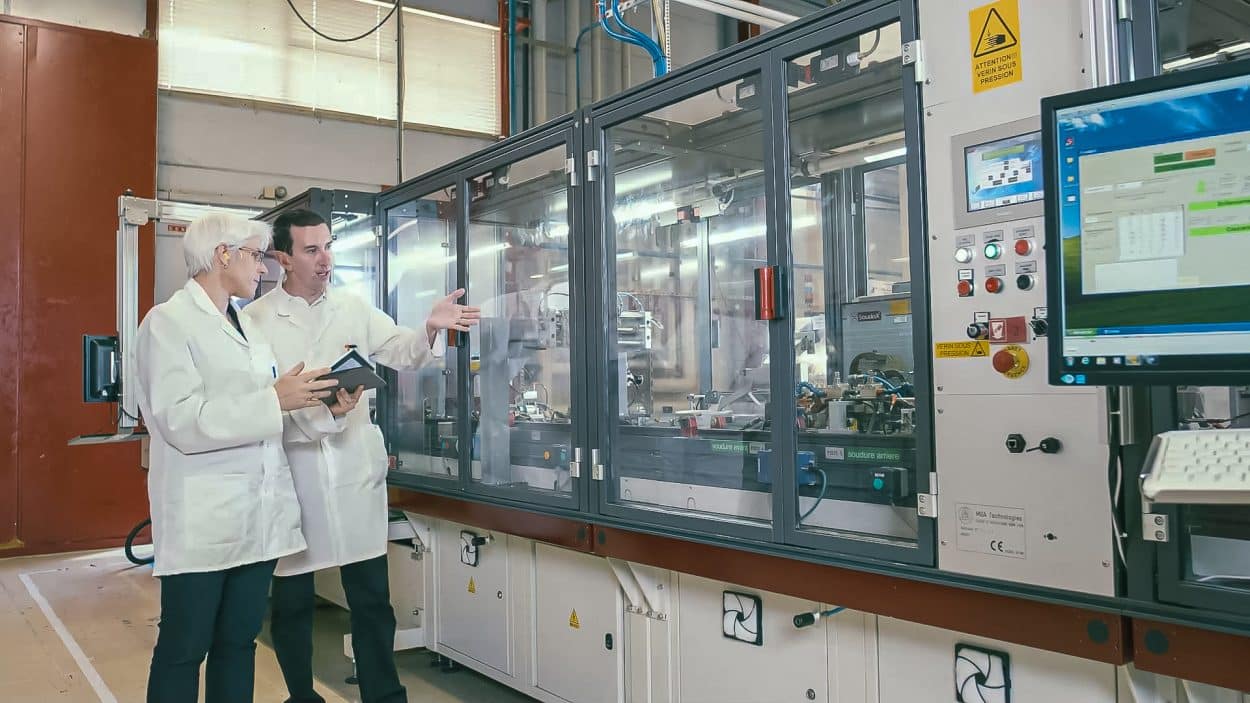The automotive revolution is underway. Combustion engines will be replaced by electric vehicles. New mobility services are on the road. How are traditional automotive companies anticipating this shift? We spoke with Beatrice Schmidt, CEO of EFI Automotive. The 85-year-old French manufacturer of automotive engines and powertrain sensors is changing its strategy to embrace this new future.
Beatrice Schmidt: “EFI Automotive is a family company created 85 years ago by my great-grandfather. Today we have 1,700 employees worldwide, at our production site in France near Lyon, in Turkey, China and in the USA. The company specializes in sensors, actuators and embedded modules. For example, we manufacture speed sensors that optimize the quantity of gasoline or diesel injection in vehicles to reduce the CO2 consumption of internal combustion engines. Many brands in the world embed our sensors like our first customer General Motors, Ford and also OEMs like Bosch.”


European regulations call for the elimination of internal combustion engines in Europe by 2035. How do you feel about this change?
Beatrice Schmidt: “The European regulations do have an impact on us because we work on everything that is related to the engine and the powertrain. So our strategic challenge today is to renew our product portfolio over the next 10 to 15 years to move towards the solutions of the future. We are therefore developing more and more solutions for electric and hybrid vehicles. We are also working on vehicle connectivity to assist driving so that it is safer.”
Beatrice Schmidt: “For example, we manufacture actuators, components and electromagnetic systems that measure position and speed and thus activate the automatic parking brake on EVs when the vehicle is on a slope and stops to make sure the vehicle stays on the slope and doesn’t fall.
We are also working on the optimization of EV power electronics systems. We manufacture sensors on the electric motor and sensors around the power chain between the battery and the motor (temperature sensors, current sensors to check the quality of the current that flows, modules to check the batteries, etc.).
For hybrid cars, we develop speed sensors, position sensors, actuators, gearbox modules and safety sensors for the height of the body for example.
Over the past two years, our focus has shifted to in-vehicle software. The automotive industry is transforming and we think it will become important to provide solutions and services to mobility via embedded software. We are now working on new mobility services, such as recharging for electric vehicles.”
Beatrice Schmidt: “Yes, we bought the company AKEOPLUS in order to manufacture a charging robot for a French car manufacturer. The idea of this project is instead of a charging cable that you would have to take out and plug in by hand every day, offering a charging robot that automatically charges the electric car by induction.
The robot is parked on a plugged in base in the garage. When the car enters the garage, the robot, equipped with four wheels, automatically goes under the car to connect and charge the car by induction. Once the car is charged, the robot returns to its base. No need to take out a cable to connect the car yourself.
Akeoplus takes care of the robotics and the software and we are also the integrator of the global solution to ensure the connection between the robot and cars.”

Beatrice Schmidt: “This robot is intended for individuals as well as professionals who have fleets of electric or hybrid cars and want to charge them more easily and quickly. This robot offers an important advantage for hybrid vehicles which people often forget to charge. Hybrids drive much more in thermal mode than in electric mode because people do not charge them. But if we charge hybrids, we can reverse this trend, increase the electric mode and reduce the carbon footprint. This robot can help with that.
This robot will be sold to the customer by the manufacturer when the vehicle is purchased. It will be sold as a robot charging option, like an accessory. This robot should be available in 2023-2024.”
Beatrice Schmidt: “We are mainly working on assistance and safety. For example, we are integrating sensors for body heights, or sensors for vehicle dynamics control to secure certain functions.”
Beatrice Schmidt: “This shortage is affecting us on two levels. Globally, the situation is tense because the shortage means manufacturers cannot produce the volumes sold. So the programs they pass on to us are less numerous.
And then we are also manufacturers of electronic products that embed semiconductors, so we are also feeling the tension. Our suppliers are European and American. We haven’t stopped production yet, but the situation is complicated and is requiring a lot of adaptability.”
Beatrice Schmidt: “The notion of service around the vehicle is the theme of tomorrow. Today we just buy a vehicle. Tomorrow, we will buy a large computer on wheels with connected services. Cars will be connected vehicles with applications like a smartphone that will tell us where parking spaces are available and optimize routes and trips according to what we want. Cars will also involve predictive maintenance. Upstream, the vehicle will tell us when there is going to be a problem with a part and which part will fail. So, what will be important will no longer be just the car but also all the services associated with the car that allow us to optimize the use of the vehicle.
Safety will also be a major theme with vehicles that can interact in a safer way with pedestrians, other drivers and the driver himself or herself. The car will be able to suggest the driver take a break if it senses, by analyzing the reaction to the steering wheel for example, that the driver is tired.”











